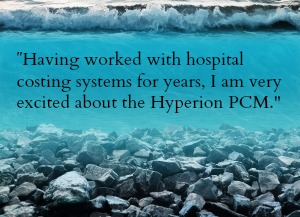There was a recent article in the NY Times with this title that captures the essence of the current costing discussion. One-liter IV bags normally contain nine grams of salt, less than two teaspoons. Much of it comes from a major Morton Salt operation in Rittman, Ohio, which uses a subterranean salt deposit formed millions of years ago. The water is local to places like Round Lake, Ill., or Rocky Mount, N.C., where Baxter and Hospira, respectively, run their biggest automated production plants under sterility standards set by the Food and Drug Administration.
But even before the finished product is sold by the case or the truckload, the real cost of a bag of normal saline, like the true cost of medical supplies from gauze to heart implants, disappears into an opaque realm of byzantine contracts, confidential rebates and fees that would be considered illegal kickbacks in many other industries. Nina Bernstein goes on to explore every step of pricing from manufacturer to patient. There are so many levels of deals and contracts and “cuts” of the profit along the way that “even participants cannot say what the simplest component of care actually costs, let alone what it should cost”. View the full article here.
This is a little overwhelming to dissect and I’m not going to get into pricing here but healthcare providers can attack this by providing transparency to the detail business transactions and their effect on cost or profitability by opening up the “black box” to reveal both direct and indirect costs. In today’s world, most costing is done by a discrete few and while these decision support processes significantly impact contract, they are not interjected within the margin analysis discussion. The importance of correlating cost vs. quality can’t be over emphasized.
Providers must open the “black box” of costing and look for inefficiencies in all aspects of care and operations. Using technology is one way to make these shifts, specifically, revolutionizing your Decision Support System. Decision support systems are something businesses take for granted. We must now transform these systems to leverage clinical and financial / administrative data to create transparent costing models that tell us about profitability across service lines, patients and encounters. Those few organizations that are able to transform data to information to decisions and then harness the power of insightful and timely analytics have been differentiated in the market. Having data itself doesn’t make a company successful; organizations must act on information and filter what is useful, appropriate and above all else, actionable.
Oracle has positioned its solutions to ask and answer both administrative and operational questions with the Hyperion Profitability and Cost Management (PCM) and Oracle Enterprise Health Analytics (EHA) solutions. PCM is geared towards administrative areas and comes with the power and engine of Essbase. Using this tier one analytic engine, Essbase, coupled with key patient care data points, can bring powerful capacity planning to fruition. Patient volumes, outcomes and operational measures are not viewed in an independent environment. But when coupled with the financial and administrative data as they are dependencies to understanding case mix index, reasons for re-admissions and staffing mix (on a case level), among other things.
Having worked with hospital costing systems for years, I am very excited about the Hyperion PCM. It can help automate and provide transparent drill downs to investigate such challenges as cost vs. operations by specialty, by department, by service line and profitability by service by leveraging both financial and operational data across multiple scenarios and models. Perficient offers design, implementation and support capabilities for Hyperion solutions.
Join us at OpenWorld 2013 #OOW13 this week in San Francisco to view our solutions around Healthcare Provider costing.
View “A Profitability and Cost Management Strategy for Healthcare Providers” on-demand webinar at
Download “A Solution to the “Signal to Noise” Problem for Healthcare Organizations” whitepaper at http://www.perficient.com/Thought-Leadership/White-Papers/2013/Oracle-Hyperion-Profitability-and-Cost Perficient’s solution for the addressing costing for healthcare providers includes the Oracle Profitability and Cost Management software.
